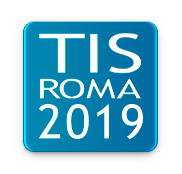TIS 2019
Special session WCTR SIG G3 (1) – Urban Transport Planning and Policy

Jacques Leonardi, Suzanne Maas and Maria Attard – Developing the first Sustainable Urban Logistics Plan in Valletta, Malta/ Combining forms of government intervention on technology, infrastructure, markets, behaviour, energy should lead to a sustainable urban logistic plan. In the recent years Valletta has seen a dramatic rise of demand for the delivery of goods within the city where logistic transport is already very challenging. The goal is to introduce solutions without changing business models which will not bring to the moneny loss.
Tiziana Campisi, Giovanni Tesoriere, Antonino Canale, Socrates Basbas, Panaiotis Vaitsis, Andread Nikiforiadis and Miltiadis Nikolaidis – Comparison of Red-Light Running (RLR) and Yellow-Light Running (YLR)traffic violations in the cities of Enna and Thessaloniki/ Providing adequate yellow signal time is importnt since it can reduce accidents. This case study is based on comparison between 3 signalized intersectons in the city of Enna, Italy and 4 signalized intersections in the city of Thessaloniki, Greece given that they have simiar traffic composition and behavours. Used methodology is descriptive. This research presuposes analysis of socio-economic and traffic data. the conclusion is that there is a strong correlation between vehicular characteristics, human behavioral factors and demographic characteristics.
Giuseppe Inturri, Vicenza Torrisi, Matteo Ignaccolo and Stefano Torrieri – Investigating transport demand references towards flexible mobility: the proposal of a demand responsive transport service for university students / This study is analyzing sharing mobility and it’s impacts among university students. The main idea is that sharing mobility is sustainable and easily accessable. Mainly used methods are surveys, online questionnaries and travel diaries. In deep analysis is needed to asses the propensity of students to join shared transport service.
Pete Syke, Margaret Bell and Dilum Dissanayake – A Method to Investigate the Drivers of Uncertainty in Nascent Transport Infrastructure Project / The goal is to identify and classify the uncertainty and study the whole process, from inception to decision. Components of the used method are data collection and analysis. It is important to identify the causes of uncertainty and the reasons why it comes to it. Case study used in this paper is Leamside Line.
Aris Christodoulou, Panayotis Christidis – Evaluating congetion in urban areas: the case of Seville / Congestioni s the consequence of a massive adoption of a car as the main transport mode. It became the main issue that cities are facing. In thi study the case of Seville is analyzed: the transport system, functional urban area, land use and transport development. Congestion is measured taking into consideration absolute accessibility, spatial dimension and temoral dimension. Next step would be to extend the analysis to cover major European cities and compare results and indicators
CHAIRMAN: Maria Attard
